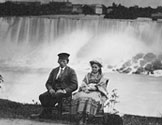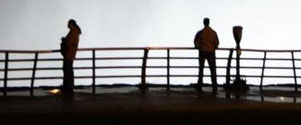

|
||||||||||||||||||||||||||||||||||||||
|
|
||||||||||||||||||||||||||||||||||||||
 |
 |
 |
 |
 Biddle Stairs to the Falls
Biddle visited the Falls at the request of Augustus Porter, who along with his brother, General Peter Porter, owned most of the land around the Falls, including Goat Island. When Biddle, one our nation’s top financiers, visited the Falls, he was greeted by General Porter, who had just concluded an appointment as Secretary of War under defeated president, John Quincy Adams. Biddle remarked favorably on the appearance of the wooden staircase visible on the Canadian side of the Falls, but lamented the lack of a similar access to the base of the U.S. Falls. Porter explained that the only reason the New York side of the Falls lacked a staircase was due to the cost. Biddle inquired and was informed by Porter that it would cost $200 to construct. Porter graciously accepted Biddle’s offer to correct this shortcoming by paying for the full cost of construction. The resulting staircase was an eighty feet tall wooden enclosed structure that contained a metal staircase. These stairs provided the first access point for visitors to descend into the gorge in order to provide a spectacular view from below. The Biddle Stairs contained small viewing portals to allow visitors a glimpse of the Falls and the Niagara Gorge from differing heights as they made their way through the staircase. The Biddle Stairs remained in operation for 98 years, before finally being demolished in 1927. The building of the Cave of the Wind elevator in 1925 spelled the end to Nicholas Biddle’s nearly century old namesake stairway to the Falls.
Douglas Farley, Director |